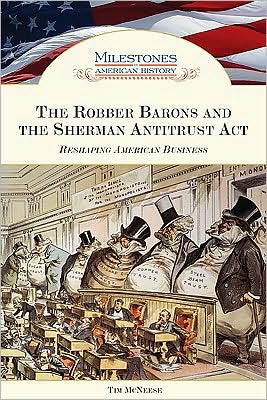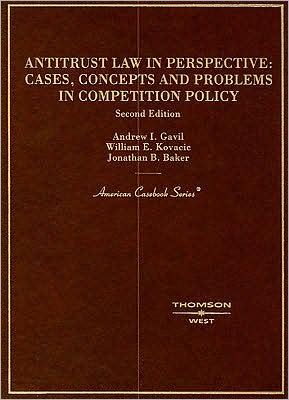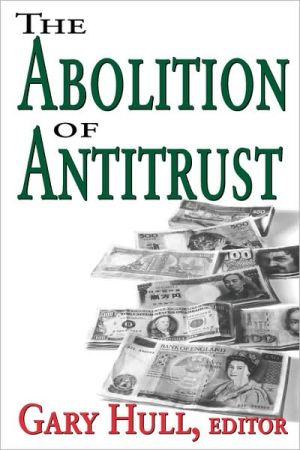Robber Barons and the Sherman Antitrust Act
During the decades following the American Civil War, the economy of the United States experienced phenomenal growth. In every sector-agriculture, shipping, merchandizing, manufacturing, and transportation-a new American system of production and distribution was born. As the economy grew, so did the personal wealth of a handful of intrepid investors, dealmakers, and Wall Street financiers. To some, they were the mighty titans of industry. To others, they were greedy robber barons. As the...
Search in google:
During the decades following the American Civil War, the economy of the United States experienced phenomenal growth. In every sector-agriculture, shipping, merchandizing, manufacturing, and transportation-a new American system of production and distribution was born. As the economy grew, so did the personal wealth of a handful of intrepid investors, dealmakers, and Wall Street financiers. To some, they were the mighty titans of industry. To others, they were greedy robber barons. As the American people came to question the robber barons' self-serving business practices, observers called for reform. The call was answered in 1890 with the passage of the Sherman Antitrust Act, a piece of legislation designed to bring down these controlling interests in the U.S. economy. The Robber Barons and the Sherman Antitrust Act explores the foundations and repercussions of the law that reshaped American business. Children's Literature Part of the "Milestones in American History" series, this timely book surveys the development of the American economy beginning in colonial times and culminating with the ruthless business arrangements of the late-19th-century robber barons and the resulting Sherman Antitrust Act of 1890. The author also provides historians' views about the effectiveness of this act. A very brief and somewhat spotty timeline at the end updates antitrust legislation and court decisions to the Microsoft case in 2000. Along the way, the author defines and provides examples of economic terms, such as "pools" and "vertical integration." In many places, he brings an otherwise somewhat dry and straightforward narrative to life through his descriptions of the dramatic lives and actions of the key players, J. P. Morgan, Andrew Carnegie, and others, including anecdotes about their interactions and occasionally vivid language (Morgan and Carnegie "ruled the American industrial landscape like lions on the Serengeti"). Photographs and contemporary political cartoons also illustrate the text. Although the bibliography cites nearly two-dozen sources, the footnotes indicate that the author relied on a much smaller number of sources. The book will provide clear information and opportunities for discussion for upper-level students. Reviewer: Cynthia Levinson
1 Introduction 12 A Colonial Economy 123 A New Economic Century 234 Technology and Industry 385 The Robber Barons 486 Antitrust Gains Popularity 657 The Sherman Antitrust Act 778 Antitrust in the New Century 91Chronology and Timeline 106Notes 111Bibliography 113Further Reading 115Index 118
\ Children's Literature\ - Cynthia Levinson\ Part of the "Milestones in American History" series, this timely book surveys the development of the American economy beginning in colonial times and culminating with the ruthless business arrangements of the late-19th-century robber barons and the resulting Sherman Antitrust Act of 1890. The author also provides historians' views about the effectiveness of this act. A very brief and somewhat spotty timeline at the end updates antitrust legislation and court decisions to the Microsoft case in 2000. Along the way, the author defines and provides examples of economic terms, such as "pools" and "vertical integration." In many places, he brings an otherwise somewhat dry and straightforward narrative to life through his descriptions of the dramatic lives and actions of the key players, J. P. Morgan, Andrew Carnegie, and others, including anecdotes about their interactions and occasionally vivid language (Morgan and Carnegie "ruled the American industrial landscape like lions on the Serengeti"). Photographs and contemporary political cartoons also illustrate the text. Although the bibliography cites nearly two-dozen sources, the footnotes indicate that the author relied on a much smaller number of sources. The book will provide clear information and opportunities for discussion for upper-level students. Reviewer: Cynthia Levinson\ \








